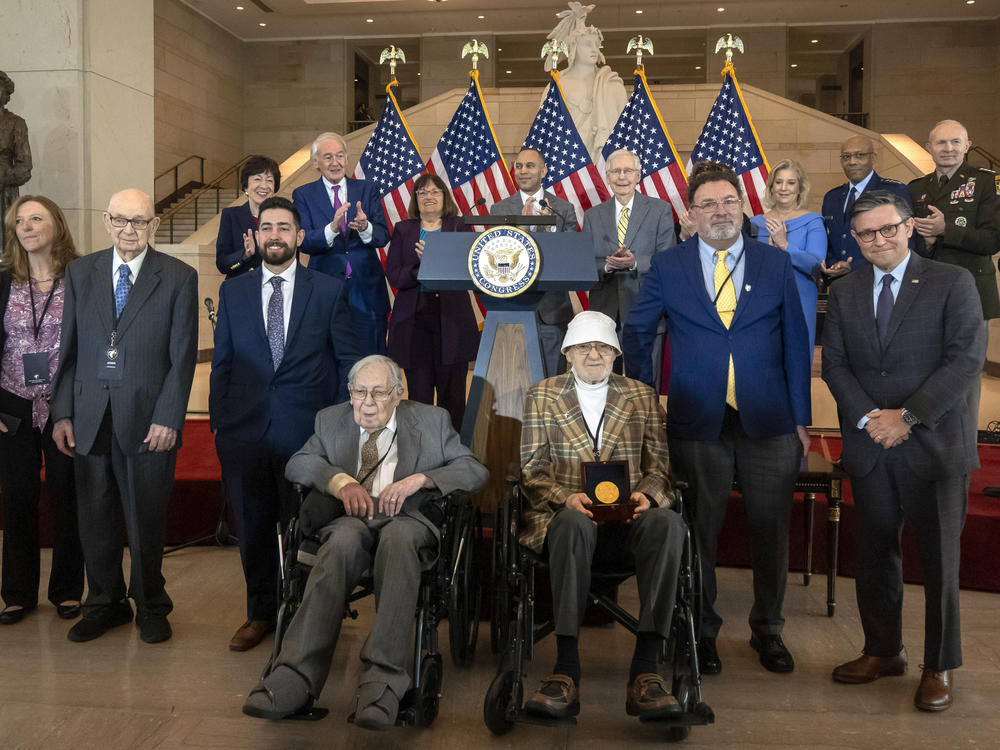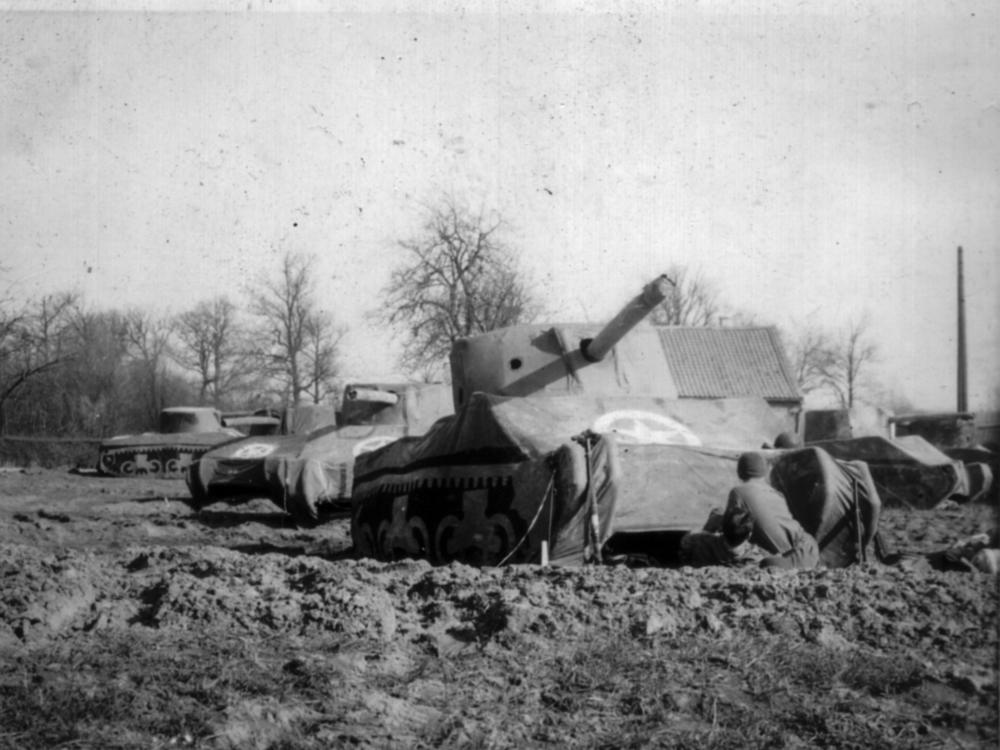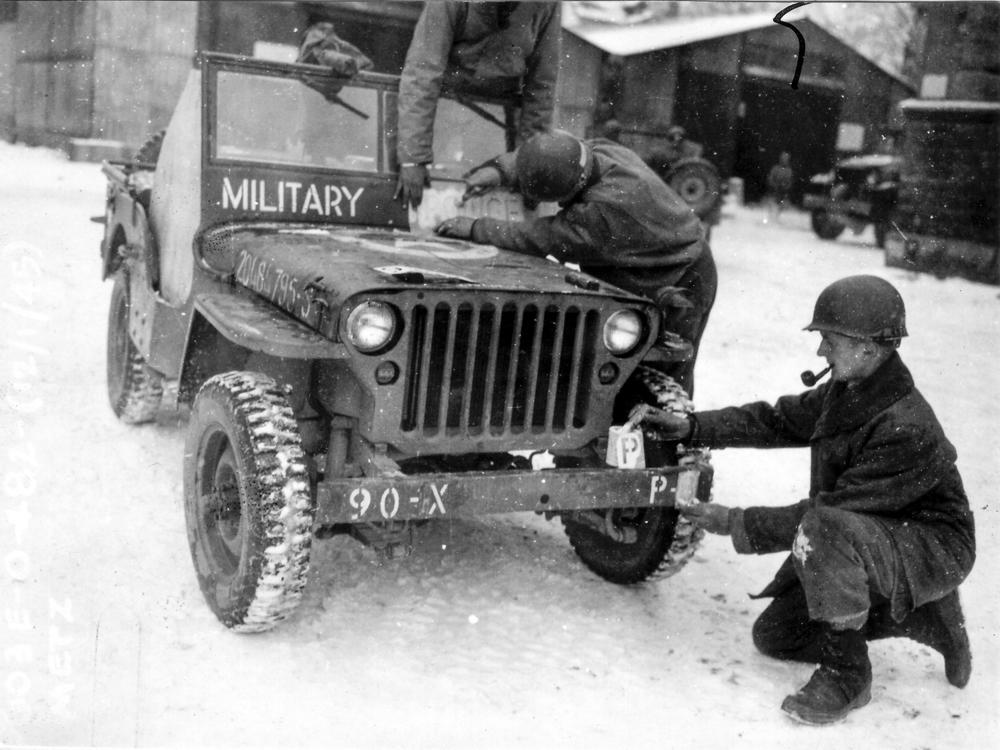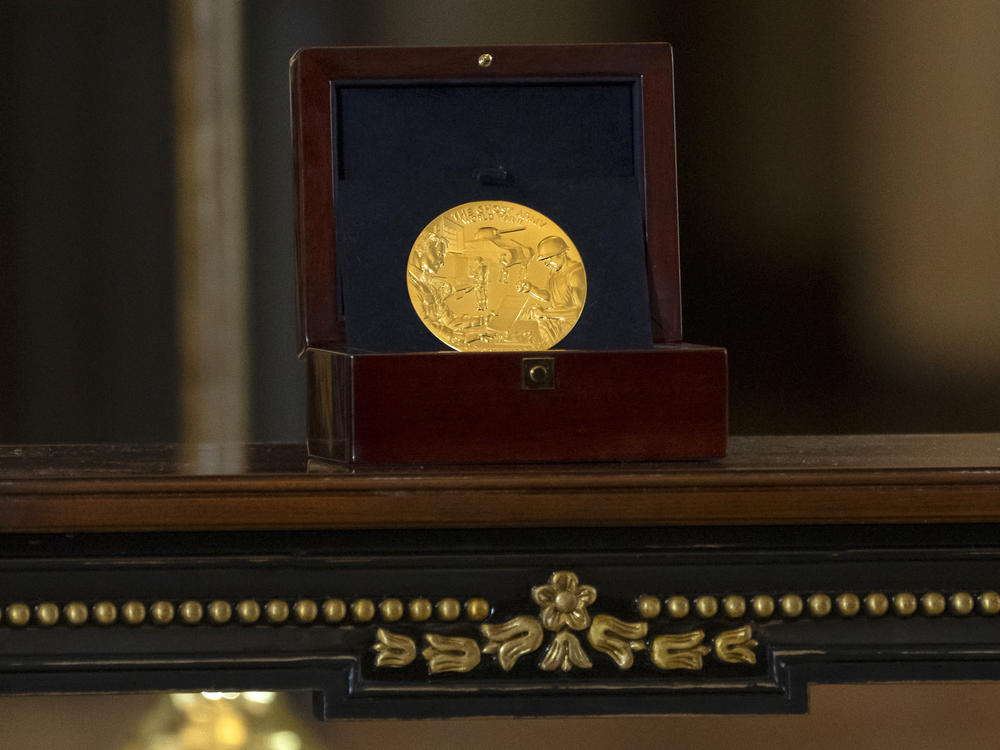Section Branding
Header Content
After decades of secrecy, the 'Ghost Army' is honored for saving U.S. lives in WWII
Primary Content
Members of the so-called "Ghost Army" used inflatable tanks, phony uniforms, fake rumors and special effects to deceive German forces during World War II, diverting attention from larger units and saving hundreds of thousands of American lives in the process.
But their contributions remained classified for decades, with many veterans taking the secret to their graves.
On Thursday, after many years of lobbying, they finally got public recognition — in the form of a Congressional Gold Medal, the highest honor the legislative body bestows.
Three Ghost Army veterans came to the U.S. Capitol to accept the award, surrounded by military and congressional leaders, lawmakers from both parties and relatives of Ghost Army members.
"It has been 80 years since the Ghost Army landed in France, 19 years since I came to this story, nine years that I've been working on the gold medal," said Rick Beyer, president of the nonprofit Ghost Army Legacy Project. "This is a day that has been a long time coming. But it has been well worth the wait, right?"
The room roared with applause.
The award specifically honors the 23d Headquarters Special Troops, which carried out more than 20 "deception missions" near the front lines in France, Belgium, Luxembourg and Germany between June 1944 and March 1945, as well as its sister unit, the 3133 Signal Co. Special, which practiced sonic deception in Italy in 1945.
The Ghost Army was made up of more than 1,000 troops — though could simulate two units totaling some 30,000 service members, according to the National WWII Museum. There are just seven surviving members, scattered across the country from Florida to Michigan to New Jersey.
Present at Thursday's event were: 100-year-old Bernard Bluestein, who joined the visual deception unit from the Cleveland Institute of Art and went on to pursue a career in industrial design; 99-year-old John Christman, who served as a demolition specialist and 100-year-old Seymour Nussenbaum, an avid stamp collector who joined the Army from the Pratt Institute. He helped make the counterfeit patches worn by the unit, and worked in package design for many years after the war.
Other attendees were descended from other Ghost Army veterans, many of whom had personal or geographic connections to the members of Congress who fought for their recognition. The efforts of those lobbyists and lawmakers culminated in the bipartisan passage of the "Ghost Army Congressional Gold Medal Act," which President Biden signed into law in 2022.
House Speaker Mike Johnson opened the event reading a quote from a print-out of the U.S. Army's report on the mission, which was declassified in 1996: "Rarely if ever has there existed a group of such few men which had so great an influence on the outcome of a major military campaign."
Subsequent speakers lauded the veterans and celebrated the overdue recognition of the group, which is credited with saving the lives of between 15,000 and 30,000 American soldiers.
"The Ghost Army's tactics were meant to be invisible, but today their constructions will no longer remain unseen in the shadows," said Sen. Ed Markey, D-Mass., one of the bill's two Senate sponsors. "Their weapons were unconventional, but their patriotism was unquestionable."
Young creatives used their skills to trick Nazis and save lives
Beyer, who also produced a 2013 PBS documentary on the Ghost Army and co-authored of The Ghost Army of World War II, told New Hampshire Public Radio in 2015 that U.S. Army planners in London were inspired by how the Allies' used deception to mislead the Germans about the location of the D-Day landings.
The Army recruited art students and young professionals from ad agencies, communications companies and other creative professions. Many would go on to legendary careers, like fashion designer Bill Blass and painter and sculptor Ellsworth Kelly.
The Ghost Army included highly trained radio operators, engineers and people from all walks of life, Beyer told NHPR.
"You have this mix of technically highly trained people, kind of regular coal miners, bartenders, policemen, etc., all working together to pull off these deceptions," he added.
One of those people was Gilbert Seltzer. The 26-year-old architectural draftsman was told after enlisting in the Army that he would be put on a top-secret mission, and ended up leading a platoon of men within the Ghost Army.
Seltzer, who died at the age of 106 in 2021, told Storycorps in 2019 that soldiers would project the sound of tanks on the nights that they moved through villages in France, Belgium and Germany.
"The natives would say to each other, 'Did you see the tanks moving through town last night?' And they were not lying," he said. "They thought they were seeing them! Imagination is unbelievable."
Their aim, he said, was to "draw fire away from the real battery to us." Seltzer recalled deceiving German forces during the Allied crossing of the Rhine River in March 1945, getting them to assemble some 20 miles away from where the actual crossing was made.
That's one of several notable successes of the Ghost Army, which lost at least three of its soldiers and saw dozens more injured during the war.
"Sometimes it's hard to know whether the enemy was fooled or not because the records didn't all survive," Beyer said. "But we do know that the Germans never discovered that there was a deception unit operating against them."
Seltzer told Storycorps that "if we saved one life, it was worth it."
That sentiment was echoed in Thursday's speeches.
Senate Minority Leader Mitch McConnell quoted one late veteran, saying "'sparing one mother or new bride the agony of putting a gold star in their front window' was what their unit was all about."
U.S. Secretary of the Army Christine Wormuth said on Thursday that traces of the Ghost Army's approach can still be found in military deception operations today.
"Even though technology has changed quite a bit since 1944, our modern techniques build on a lot of what the Ghost Army did, and we are still learning from your legacy," she said.
After decades of secrecy, efforts to honor the Ghost Army finally paid off
While the Ghost Army helped liberate Europe and end the war, it wasn't publicly given credit for another half a century.
"Following the war, the unit's soldiers were sworn to secrecy, records were classified and equipment packed away," says the National WWII Museum.
Wormuth said Thursday that immediately after the war, Ghost Army soldiers received a letter of thanks from then-Gen. Dwight Eisenhower, with a memorable P.S.: "If you tell anyone, I'll see that you hang."
Beyer told WUNC before the ceremony that the mission had been so deeply classified that the "Army basically lost it."
"It kind of forgot about it until the late 80s, when they suddenly rediscovered this and started bringing Ghost Army soldiers to the Pentagon for briefings," he explained.
Rep. Ann Kuster, D-N.H., the bill's first sponsor and the daughter of a WWII veteran who spent six months in a German POW camp, said many of her generation's fathers did not talk about the war afterwards — and that was especially true for the top-secret Ghost Army.
"One of my favorite lines was one gentleman who only would tell his family 'I blew up tanks,' without saying they were inflatable tanks," she said on Thursday.
Once the mission was declassified, Beyer and other veterans' relatives spearheaded efforts to celebrate its legacy. The nonprofit Ghost Army Legacy Project, which was founded in 2016, erected two historical markers in Europe while leading the fight for a gold medal.
Beyer said he knew from talking to many Ghost Army veterans firsthand that none of them considered themselves a hero, but rather gave credit to the infantrymen and tankers who bore the brunt of the fighting.
"They would have been shocked that 80 years later, a grateful nation would honor them in this way," he said from the podium.
Bluestein, the only veteran who spoke at the ceremony, offered his thanks to those who had supported the effort.
"You've all contributed to my existence and to my being who I am," he said. "I'm very proud and happy to be here to receive this honor."




